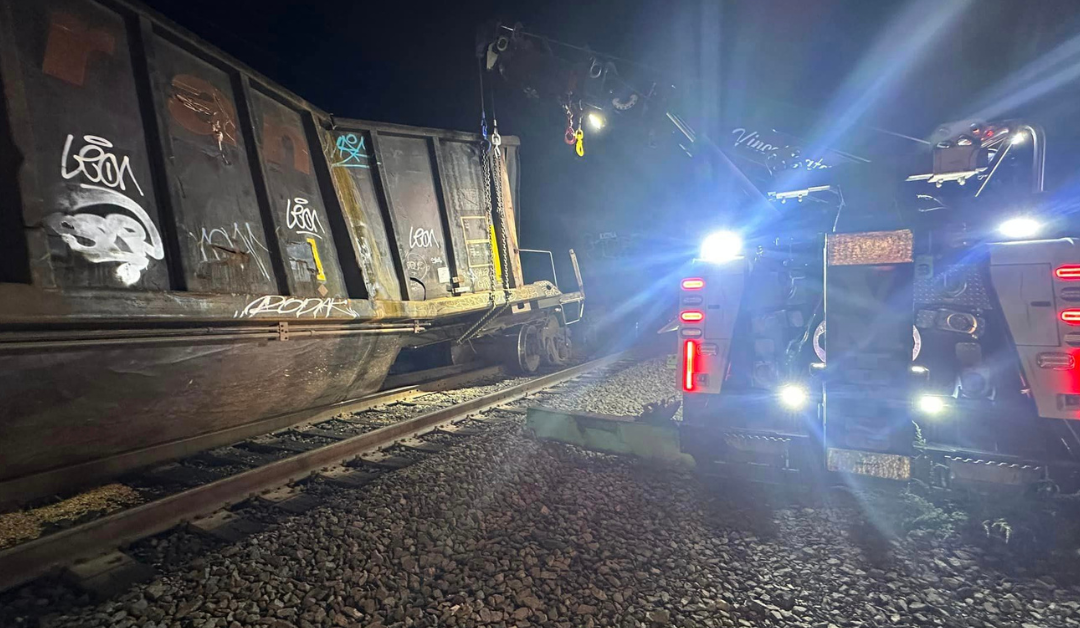Train derailment can have devastating consequences, causing damage to infrastructure, disrupting transportation systems, and posing significant safety risks. Understanding the causes and recovery process is crucial for ensuring the efficiency and effectiveness of these operations. We will explore the factors that cause train derailments and the important role that towing professionals play in their recovery. Additionally, we will delve into the specialized equipment these professionals use to handle the aftermath of these accidents with precision and safety.
What causes train derailments?
Train derailments can occur due to various factors, such as track defects, excessive speed, mechanical failures, human error, and extreme weather conditions. These incidents are primarily caused by issues with the track, including broken or misaligned rails, insufficient maintenance, or inadequate inspection. Additionally, train operators must adhere to speed limits and ensure proper braking to prevent derailments. Mechanical failures, such as faulty wheels or bearings, can also lead to derailments if not detected and addressed promptly. Human error, such as improper switching or signaling, can contribute to these accidents as well. Finally, extreme weather conditions like heavy rain, snow, or high winds can impact the stability of the train and increase the risk of derailment. It is crucial to address these factors through proper maintenance, regular inspections, and training to ensure the safety and reliability of train operations.
How often do train derailments occur?
Train derailments are infrequent occurrences in the transportation industry. These incidents involve the unintended departure of a train from its tracks. While the frequency of train derailments varies depending on various factors such as geographical location, track conditions, and maintenance practices, it is important to note that safety measures and regulations have significantly reduced the number of derailments in recent years.
How do towing professionals assist in train derailment recovery?
Towing professionals play a crucial role in train derailment recovery. Their expertise and specialized equipment enable them to efficiently and safely handle the aftermath of such accidents. From removing locomotives to clearing debris and restoring the tracks, these professionals work diligently to restore normalcy to the affected area. Their extensive knowledge of towing techniques and protocols ensures they conduct recovery operations with precision and adhere to industry standards. By leveraging their skills and resources, towing professionals contribute significantly to the overall efficiency and effectiveness of train derailment recovery efforts.
What specialized equipment do towing professionals use during train derailment recovery?
When it comes to train derailment recovery, towing professionals rely on a range of specialized equipment to efficiently and safely handle the situation. One crucial tool used in these operations is the heavy-duty crane, which can lift and move derailed train cars with precision. Additionally, advanced winching systems and hydraulic jacks are employed to stabilize and maneuver the cars into their proper positions. To ensure the safety of both the recovery team and the surrounding environment, professionals also utilize spill containment kits to handle any potential fuel or hazardous material leaks. Moreover, cutting and welding equipment is utilized to separate and dismantle damaged train cars, enabling their removal from the site. These specialized tools and equipment allow towing professionals to effectively navigate the challenges posed by train derailments and perform successful recovery operations.
Need Help With Train Derailment? Contact Arndt’s Towing at:
Phone: (610) 693-6854
Email: support@arndtstowing.com
Location: 952 W Penn Ave, Robesonia, PA 19551

